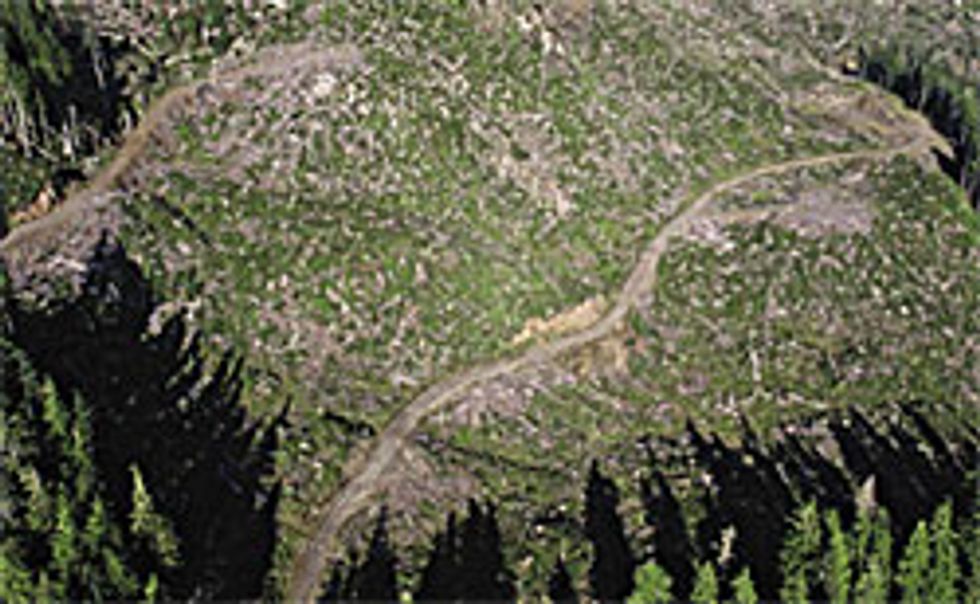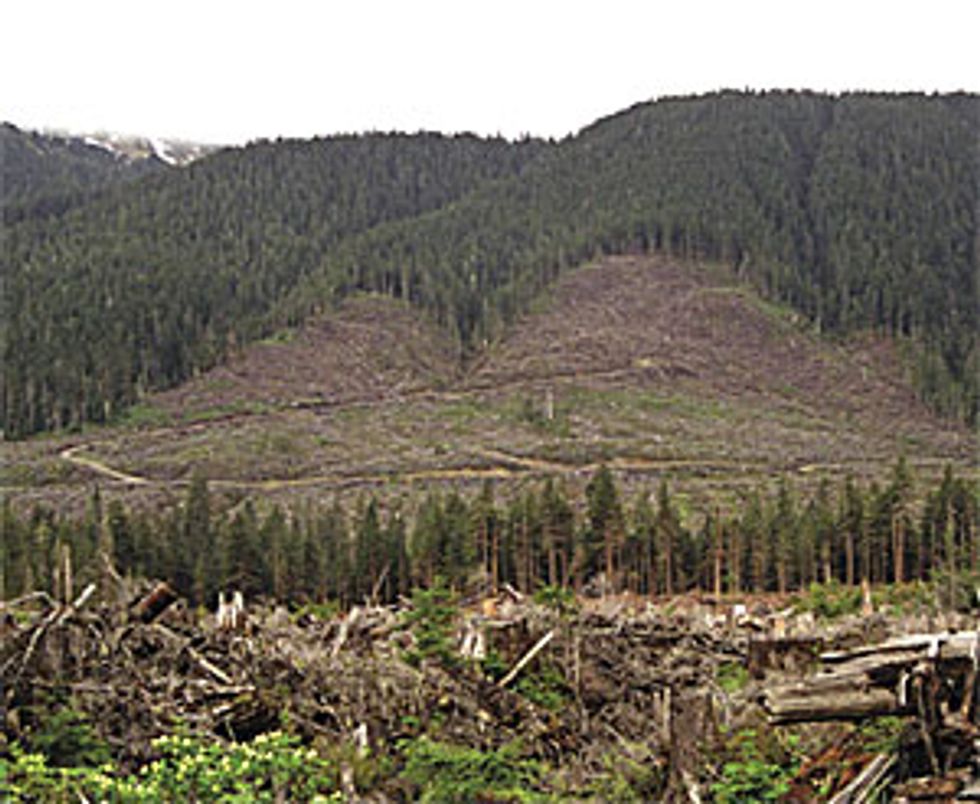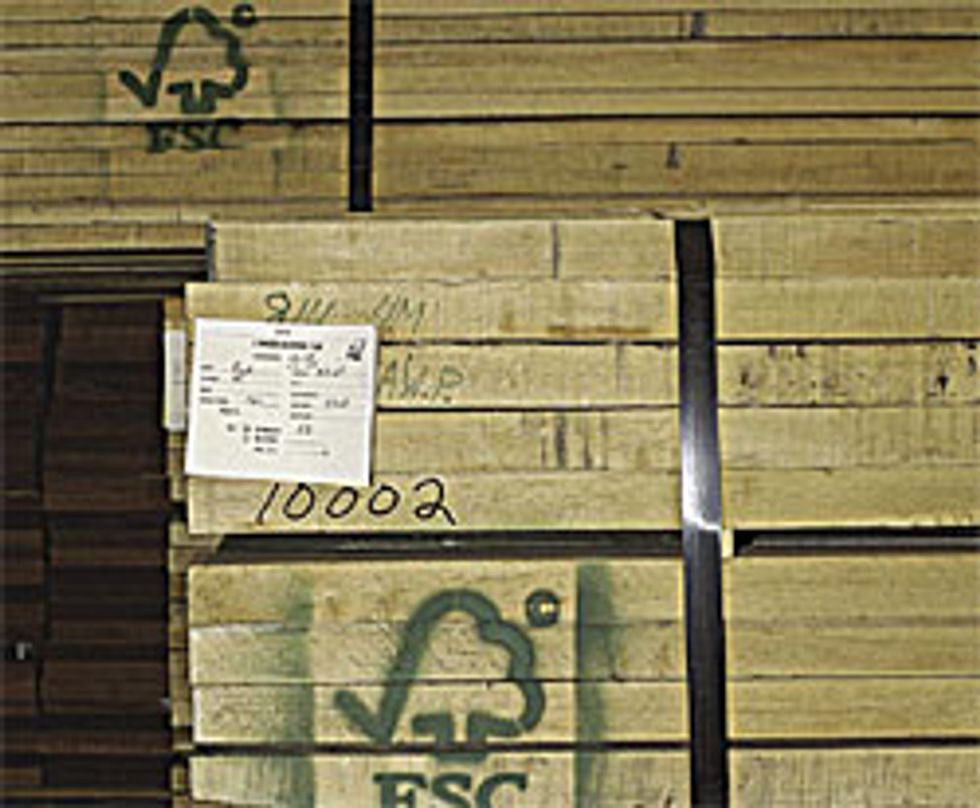The wood so crucial for the incredible range of sounds available exclusively from a high quality guitar is, in many cases, facing imminent extinction.
 |
|
The most important thing however may be the one that we are all overlooking: the fact that the wood so crucial for the incredible range of sounds available exclusively from a high quality guitar is, in many cases, facing imminent extinction.
Fortunately, this is a situation that guitar manufacturers are trying to prevent. At the summer NAMM conference in 2006, Greenpeace brought together the heads of Gibson, Fender, Martin and Taylor, forming a group known as the MusicWood Coalition to work proactively to create sustainable resources and ensure that quality guitars will be readily available far into the future. For all of these companies, the MusicWood Coalition was not their first foray into environmentalism in the name of music, but it did mark the first time that all four worked side by side toward a common goal. In this special section, you will find all you need to know about the threats to the leading tonewoods, the efforts being taken to save them, and how four of the world’s biggest guitar companies have become the unlikeliest of environmental crusaders.

|
Alaska: Disappearing Wood
In Alaska, the big issue is spruce -- Sitka spruce to be exact. Sitka is used extensively for acoustic tops and for soundboards in other instruments, like pianos. The wood is ideal for these purposes because of its high strength-to-density ratio. Its makeup is unique in that it is strong enough to avoid warping while still being thin enough to produce the best tone. The Sitka spruce is found in select parts of the Pacific Northwest, and in order to achieve the desired tones, the wood must come from trees that are 250 years old, or older. This so-called “old growth,” is rare – only one lumber company in the area has old growth in its forests. The company, located in Southeast Alaska, is Sealaska, owned by Alaskan natives. Here, the old growth of Sitka is being cut so extensively that it could be obliterated in 6 to15 years.
Currently, the area is harvested using 99% clear-cutting, according to Greenpeace’s Forest Campaign Coordinator, Scott Paul. Clear-cutting involves exactly what one might imagine: clearing an area with no regard for the age or type of trees that are being cut, and little regard for which trees are going for which purpose. By this method, a 250-year-old tree that could produce many wonderful-toned acoustic tops could end up lumber for housing in Asia.

|
Central America:Devastation of Illegal Logging
In Central America, a similar situation was taking place with mahogany. Isolated in reserves, with little or no access to markets for the wood, impoverished residents of these areas had no incentive for managing their forests. Because of this, Central- American forests in Honduras and Guatemala struggled with illegal logging practices.
Without incentive to manage the forests, residents had no reason to object when logging took place illegally. It was not simply the act of logging, however, that was obliterating the mahogany forests. The logging was done with little regard to cutting methods. In addition, fires and the spread of agriculture threatened the trees, as farmers cleared trees for farmland.
| Pending Solution Environmentalists and guitar manufacturers come together to help |

If the problems that face tonewoods weren’t unique enough, the efforts to preserve the precious wood presents an entire new set of difficulties. How does an industry that uses lumber endear itself to a community that is focused on protecting it? It certainly helps that in total, coalition member uses only 150 logs of Sitka spruce each year. To put the number in perspective, a single processing facility will process 150 logs in one day. This minimal usage, combined with the music industry’s visibility, made guitar manufacturers the perfect ally for groups like Greenpeace and the Rainforest Alliance.
The steps being taken toward preserving the wood all revolve around a complex process called FSC certification – FSC stands for the Forest Stewardship Council. Certification through the FSC programs involves setting up forests for logging based on the best available science, while taking into consideration all economic, social and environmental concerns. Greenpeace’s Scott Paul says that this is the best hope for keeping loggers, buyers and environmentalists happy.
 Alaska: The MusicWood Coalition
Alaska: The MusicWood CoalitionThe MusicWood Coalition is comprised of Gibson, Fender, Martin and Taylor, along with guitar companies and wood distributers Walden, Luthiers Mercantile International, Pacific Rim Tonewoods, North American Wood Products and Allied Lutherie. The coalition is a Greenpeace-run program with a long-term goal of addressing tonewood issues around the world. The program’s current focus is getting Sealaska to become FSC certified. If the forests were certified, the Sitka spruce resource would be a more sustainable one.
There is a long way to go with Sealaska, says Scott Paul, but progress is being made. Representatives from Sealaska attended the 2007 NAMM conference, which marked the one-year anniversary of the MusicWood Coalition. Greenpeace had been working in Southeast Alaska years before the beginning of the MusicWood program, however.
Despite the work being done, FSC certification has not been an issue brought before Sealaska’s board, says Juszkiewicz. “Sealaska knows that they’ve gotta become more green,” he said. However, FSC certification is a long, expensive process that Paul says will take at least a year to complete. Though the MusicWood Coalition has offered to pay a portion of the certification fees, the restructuring and changing of policies is a daunting task in itself.
Still, the MusicWood Coalition is hopeful that their visibility will draw larger users of the wood to encourage Sealaska to consider certification. According to Juszkiewicz, the music industry is useful for the more social and political issues, and “the intrigue of dealing with music guys.” MusicWood hopes that this intrigue will be enough to drive change.
Central America: SmartWood & the Rainforest Alliance
Guitarists may be familiar with the term SmartWood. Gibson has offered a SmartWood Les Paul for the past ten years, while Martin has made SmartWood guitars for Sting, and also offers the SWOMGT and SWGDT models, made with sustainable cherry and rescued spruce. The SmartWood program is maintained by the Rainforest Alliance. Working alongside Gibson, the Rainforest Alliance has transformed impoverished parts of Honduras and Guatemala into successful – and environmentally friendly – producers of mahogany.
In Central America, the two companies work together to train and prepare communities for forest certification. This training manifests itself in multiple different practices that promote sustainability. One such practice is harvesting wood from trees that have already fallen naturally. The actual logging is done without heavy machinery, and is transported by mules. Since the wood is being cut primarily for the guitar industry, trees are cut into blocks specifically for guitar necks. This minimizes waste, and improves transportation.
The incentive to change has come through Gibson’s competitive prices for FSC certified wood. Because Gibson is willing to pay more for it, the local loggers themselves have more incentive to harvest the legal, and environmentally friendly way. This income actually has allowed poverty stricken people to send their children to school, and improve their standard of living.
The programs have been so successful that Daphne Hewitt of the Rainforest Alliance says that they intend to move into South America to implement similar techniques, and that Martin and Taylor have also expressed interest in pursuing these methods for tropical hardwoods.
Read MoreShow less